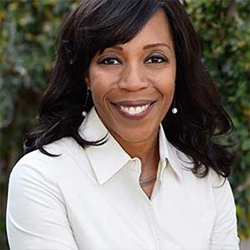Web Design Essentials – Discover the Ingredients That Will Make Your Website #1
Web design is an art and a science. Not only are you trying to captivate new visitors but you are also trying to convince search engine robots to rank your website. So, the question is: how do you measure the effectiveness of a website? In this article on Web Design Essentials you’ll learn how to evaluate your website’s effectiveness and how you can improve it.
Rate each of the following ten criteria on a scale of 1 to 10, with 1 being the lowest 10% of websites (worst) and 10 equaling the top 10% of websites. And an average rating of 5 would mean 50% of websites are better and 50% of websites are worse. So, now for the essentials.
General Impression & Message
When you first meet someone you form a general impression about him or her. It may not necessarily reflect who they are but nonetheless you still form an impression about them. When someone visits your website, they too will have a general impression about you, your organization or company. What is the impression your website is making? Is it professional? Creative? Boring? Cluttered? Dull? Fun? Informative? Ask yourself these questions through the eyes of your target audience.
Along with the general impression, your website also communicates a message. When you look at the items on someone’s refrigerator, you get a message. Often times they have family pictures or a calendar or other treasured memories. Look at your home page and ask yourself: what you are emphasizing? Often times we give more space to things of lesser importance without even realizing it.
Navigation
If you’ve ever traveled in another country, there’s a good possibility you may have gotten lost, especially if you were traveling in a new area that used a different language, vocabulary and driving laws. Websites also have foreign visitors, people with different vocabularies and experiences. How easy is your website to navigate? Is the navigation consistent and easy understood and found? Can people get to where they want to go quickly? Another question to ask yourself is: how easy is it to find less important links? Are they easily found? If links are the same color as the rest of the text on your website or the headings on your website, they may be difficult to recognize. Are you using drop down menus with lists longer than 6-8 items? Are your sub-menus listed in alphabetical order or some other logical order that can be observed by an outsider? Do you use vocabulary that is common to everyone or just to the people that already know your organization’s vocabulary? These questions are helpful when evaluating your navigation. Apple.com has a great website navigation because no matter what section of their website you are on (iTunes, iPhone, etc) you still have the same consistent navigation at the top.
Maintainable
The maintainability of a website is often overlooked by ambitious or overzealous web designers. They make an attractive website that meets most of the other web design essentials listed here, but six months from now their website has most of the same information because the organization does not have the ability to easily update or expand their website. This problem is solved by implementing a Content Management System (also referred to as a CMS). Content Management Systems come in all sizes and forms and just because you have one doesn’t mean it’s the best fit for your organization or website needs. A few things to ask yourself before choosing a CMS are:
- How many users need to have access to edit the website?
- Can all users of the website have the same level of access or do they need different permissions?
- Do website changes need to be approved by someone or can they immediately go live?
- How well trained in HTML, CSS, Photoshop, etc are the users who will be maintaining the site?
- How many pages does your website have?
- Do you want to host your own CMS or use a third-parties CMS that often includes hosting your website?
- What is your budget?
- Do you want it to be software based or a web-based CMS?
After you jot the answers down to these questions, consider what you would like the answer to these questions to be a year from now? Five years from now? Will more people be involved? Will there be more information that needs to be communicated?
Page Flow
Although page flow can be connected to Navigation, it focuses more on the layout of the page. Is the layout clean, simple and uncluttered? Beyond clicking on links, can users find the information they are looking for once they are on the page that has the information? Do all of the pages look the same? Do they follow the same format? It’s a good idea if the pages follow the same general format but necessarily good if every page looks like the next.
Current Information & Dynamic Content
How current is the information on your website? When was the last time your home pages and sub pages were updated? Does your calendar have old events on it? Is your website the most helpful place for visitors to get information about your organization or do they have to open a brochure or printed piece for all of the info? Do you provide enough information about events, products, and your organization to sufficiently inform your audience?
Reasons to Come Back
Current information is a big reason visitors will or will not return to your website. CNN.com is so good at posting current information that they can get visitors to come back over and over again. But often times this is not enough to get visitors to return. Implementing other reasons to return such as videos, games, auctions, event registrations, free stuff, chat, message boards, searches, rating systems, etc. increase the likelihood users will return. What are the different audiences you are targeting? What are you hoping they will do once they have come to your website once? Does your website lure your visitors back again? How can your audience interact with your site or contribute to it? Give your audience many good reasons to return and they probably will.
Professional
This seems like an obvious essential, but it frequently goes unchecked. Make you’re your website has correct spelling, grammar, good word choice, high quality photos and images, valid code and HTML and consistent styles. This helps promote the reputability of your website and organization. There are plenty of tools out there to help you with spelling, grammar, and validating your code, so use them. Also ask yourself about your organization’s logo…does it look professional or like someone in the office designed it? I have nothing against people in your office but most of them are not experienced logo designers.
Search Engine Optimization (SEO)
SEO is all about getting search engines to rank your website at the top. I haven’t met anyone that has not wanted more visitors to their website. More visitors usually means more revenue, more prospects, more products sold, more people influenced, more people coming to your events… you want more people. So now the question to ask yourself is: are you optimizing your website for the search engines (as well as your visitors)? Do you have a lot of inbound links to your website? Do you have a lot of content? Can the search engine bots crawl through your pages? If you’re using Flash navigation, they probably cannot. Do you have statistics about your website traffic? Do you use keywords, descriptions, alt image tags, etc? Unless you’ve spent a significant amount of time tweaking your website for the search engines (and you have comprehensive and convincing stats to back it up) then you are doing average at best at SEO.
Compatibility
Compatibility is an important web design benchmark. In simple terms it’s the ability for users to access your website. Browser compatibility, accessibility, page loading speed, mobile device compatibility, and screen resolution all play an important part in reaching the largest audience possible. Make sure you have website statistics about your visitors that contain these types of information.
Comparison to Competitors
Although one could argue that comparison to your competitors is not an essential… web design like so many other things is relative. Years ago in the earlier days of the internet, websites were using much more primitive technology, yet people still obtained information and used websites. But if you haven’t changed your website in the last several years it slowly becomes outdated and ineffective. Technology is continuously advancing (just like your competitors) and knowing how your website ranks compared to them is important indicator about how your website is doing. Like most products, services and ratings, your website should be an important arm of your marketing.
We focus on beautiful web design that delivers results for your organization. Our specialty is creating customized WordPress websites.
About Us
Johnny Flash Productions
Johnny Flash Productions is a creative agency based outside of Washington D.C. that focuses on digital strategy, web design and development, graphic design and event production that helps businesses get better results from their marketing.
Our organization couldn't be happier with the beautiful website Johnny Flash Productions created for us. They helped streamline thousands of components from our previous site into a site that portrays the mission of our organization and tells the story of our purpose while bringing in and engaging new and returning visitors.
We wouldn't hesitate to use them again and have already recommended them to several people who have seen the quality of our new site.
We have also seen a remarkable uptick in response in those who have gone to the site just in the first few weeks since launch in signing up for future communications. That is the sort of prolonged engagement we have been looking for, and Johnny Flash Productions delivered beyond our hopes.

I cannot begin to speak highly enough of Johnny Flash Productions. I was first alerted to their company by doing a Google search & found only one company around with so many 5-star reviews, so was curious if they could all be real. I found through working with John & Eowyn & the Johnny Flash team that we were able to collaborate to create the perfect website for our organization.
As a team of designers, it was important for us to differentiate ourselves & express the nature of our organization & ourselves through this most valuable medium of the modern age. The team @ Jonny Flash absolutely nailed it & we could not be more pleased.
Thank you Johnny for facilitating such an first class experience & thank you Eowyn for being our guiding light & all of the hard work that you put into helping our company shine!

John has been managing my website SEO and Google Ads for only a few months now and his services have already generated profitable leads. I can’t say enough about his company’s professionalism, promptness and results oriented approach. Hiring his company has been an excellent business decision!!

We are truly grateful for our time working with John and his team. They were able to manage a full redesign within a relatively tight timeline and delivered an impressive site that also worked well through mobile devices as well.
They kept us on schedule as well and were a pleasure to work with. The team continues to be incredibly responsive following the initial launch.

Johnny Flash redesigned both our church website and our preschool website to align with our new branding, helped us switch web hosts and met some tight timelines as well. John and his team are always professional, have fresh ideas and are quick to respond to questions.
They also worked us to revamp both websites within our set budget while still providing a quality web design and custom look. If I could give them ten stars, I would!

Efficient, effective and professional - Johnny Flash Productions did an awesome job of rebranding and migrating our WordPress website. We launched last week and there is positive feedback all around for the sleek, new, mobile friendly look.

I must admit that I was not crazy about revamping our website, primarily due to the time commitment and cost. However, in looking through the updated content this morning, the new website looks terrific and was well worth the time and expense.
Thanks to you and your team for all of your hard work.

Johnny Flash Productions gets results building stand-out websites that are optimized for success! Their team of professionals worked quickly to get to know my business and developed a plan of action. Their designers developed an amazing design that exceeded our expectations. If your organization or business is looking to build or improve your presence online.
I highly recommend Johnny Flash Productions!

We chose Johnny Flash Productions because I knew the person, John Falke. Relationships are important. Knowing character is important and relevant to business decisions. Knowing whether a person/business will stick by their word is important along with can they perform.
A company that can perform is good, but if they do not stick by their word, skill means nothing. You produced a great product, worked with us, gave a fair price and kept us on task.

John and his team at Johnny Flash Productions did an amazing job on our new company website! John was very patient and professional throughout the entire process and always responsive to any request we had.
I would definitely recommend their services to anyone looking to create a website!

I recommend Johnny Flash Productions because they respond promptly and with honesty when requesting their services, they are very professional and I am a satisfied client!
They fulfilled my expectations with the website and branding project. It has already been a success and helped us reach our goals for our business. Thanks Johnny Flash Productions.

We regularly get rave reviews about our website. Often other non-profits have asked us for a referral. Johnny Flash was easy to work with and has always been responsive to our needs. They provided several built in tools that help keep our website from becoming stale.

Johnny Flash Productions has played an integral role in the growth of our business. From logo redesigns, website design and management, fliers, banners, signs and more, they have done an incredible job of taking our ideas and WOWing us with his visual designs.
John's knowledge base allows them to understand our ideas and concepts and bring it all together in a professional, well thought out deliverable. Their work has always exceeded our expectations in both quality and speed.
We look forward to continuing our long business relationship as he continues to stay on top and ahead of visual marketing trends without losing it’s classic appeal.

Johnny Flash Productions is a company that truly cares about their clients, this is obvious by not only their work ethic but they also the way they put their heart into every project they complete.
Johnny Flash Productions was a pleasure to work with, we look forward to working with them again in the future.

When we all get a little too busy, sometimes we forget to say a heartfelt "Thank You"! I am so grateful that God led us to partner with you. I know good things will come from our hard work done together in His name. The website is terrific. Pure and simple.
Thanks for your expertise, guidance and always friendly attitude.

I was looking for a web designer who was not only talented, but could deliver - and keep delivering what I needed month after month. The team at Johnny Flash Productions brought ideas to the table that complemented what I wanted to do with my website and their design exceeded my expectations.
I was willing to pay more for their continuing monthly service than I had paid previously because they laid out what I could expect from their team. So far, they have under promised and over delivered.

Johnny Flash Productions helped breathe new life into Immanuel’s online presence with their wonderful redesign of our website. Aside from their consummate professionalism, flexibility and keen attention to detail, they were an absolute pleasure to work with.
It had to be a daunting task to be presented with the enormous number of expectations , hopes and ideas generated from our church’s website committee throughout the course of the website re-design, but if anything, Johnny Flash's resulting work exceeded all expectations.
I’m sure I can speak for all of us on the committee when saying that we’d heartily recommend Johnny Flash to any church or organization in need of a skilled, knowledgeable, easy-to-work with design company.

Exceeded all expectations in their abilities to professionally evaluate and customize our company WordPress website. Above all else, their customer service is the best I've dealt with in a long time with any company I've worked with in the past. I definitely recommend Johnny Flash Productions to anyone looking for exceptional service, professional detail and customer support.

John, Joli and Team provided the path forward for us on how to take our desire to have a brand new website to getting it launched and live. We started at a high level of who we were and what we wanted to accomplish with our website.
John provided an up front schedule of what tasks would be completed by when from their team.
There were tweaks along the way that we would make and feedback given, and it was always well received with the changes being made in a timely manner. Thanks John and Joli.

We used Johnny Flash Productions to help us recreate our website and to make it more visually appealing and more current. Working with them was very pleasant and easy. They really listened to what we were looking for and worked within that framework.
I would highly recommend them. I am happy to provide a reference or answer any questions that you may have.

Professional, knowledgeable, friendly! Everything you could ask for in a website development firm/SEO company. Johnny Flash Productions is the best website development firm and SEO firm in Northern Virginia!

I would like to thank Johnny Flash Productions for there great service my company has been able to get to get to the top of Google searches in half the time most companies take. I am now receiving 3 to 5 viable leads a day that all lead to service work for my company. And I can not thank them enough for all of there support with my site and maintaining it for me.

We found Johnny Flash Productions to be professional and a pleasure to work with. Their industry knowledge and creative approaches were incredibly helpful.
Our new website exceeds our expectations and we look forward to continuing our relationship with Johnny Flash Productions with their responsive and ongoing website upkeep, maintenance and SEO.

John and his team do top quality design work, website work, and just about anything you would need to have a dynamic presentation in both print and digital media. Incredibly talented and innovative, you can call him with a "thought" that comes back to you better than you ever imagined. Truly professional and talented, I could not recommend more highly.

John and his team are great to work with. We have worked with them on a broad range of projects including logo development, campaign materials and website design. They are a great partner!

Johnny Flash and team approached the project with as much passion as we had (we're a very passionate team) for the site and logo refresh. We worked through the logo and website designs and within a couple of weeks, it felt as if we were all one company.
The team was super responsive, understood our vision for the logo/website and communicated clearly every step of the way.

They did excellent design work, were professional and responsive. They were an absolute pleasure to work with, and I plan on using them for future projects.

John Falke and Johnny Flash were incredible to work with and produced a very professional and progressive website for Covenant Park Consulting and were completely responsive to our vision and goals.

This process was so much easier than I expected. John listened carefully to what I was expecting to accomplish with our website and kept me focused on our objectives.
We are now able to register preschool students online (especially important during COVID). Parents are very happy that now they have the option to pay by credit card. I would highly recommend this company!

Such an amazing service. A beautiful website that has already gotten the practice new business. John kept us on track so that our website was up and running in the time allotted. Thanks so much. Highly recommend.

Johnny Flash Productions and their team were aces to work with. Their process was simple, and project schedule was on target.
More importantly, their Storybrand mindset opened us up to a whole new world for our website presence, business development and even our own client communication.

Johnny Flash did a great job on our new Wellesley Hills Congregational Church website. Delivered on time and on budget. They helped us shape good content as well.
We were so satisfied we had them redo our Wellesley Nursery School in the Hills website also.

I have worked with Johnny Flash Productions on 3 of my own websites and recommended Johnny Flash productions to two other family members who were also in need of new websites. We have all had an exceptional experience during the process.
The staff are very responsive, organized, on time and they follow through until the work is complete. We valued them so much that we use them for our monthly maintenance and they help with our advertising online.

Working with John and his team has been such a wonderful experience! They consistently go above and beyond to quickly complete our requests, and it's great working with a team of true experts.
I highly recommend them for anyone looking for WordPress developers.

The Johnny Flash team is incredibly skilled, attentive and patient. We are very happy with our new WordPress website!

Excellent WordPress Web Designer, we are so lucky to have them design our website we were very satisfied with the results!

It has been such a pleasure working with John and Nicole to develop our WordPress website. The team is very professional and worked closely with us during the entire process. We couldn't be happier with the result, we love our new website.
I definitely recommend Johnny Flash Productions!

Was a pleasure to work with Johnny Flash Productions to walk through the full life cycle of a complete redesign of several of our ministries websites. Working with people who are experts caused us to think outside the box in how we really tell our story through our website.
The entire team was great to work with and the value has been incredible! God is good!

We have a fabulous website thanks to their excellent process.

We have been very pleased with our website design experience with Johnny Flash. We appreciated how their structured process enabled our website team to prioritize our goals for the project and develop a final product customized to meet our individual needs.

We had a great experience working with Joli and the team at Johnny Flash. Their whole process was very helpful to shaping and sharing our website message.

Johnny Flash Productions was a joy to work with! They helped our church completely re-do our website. They also helped us refresh our look and logo. We have had many people comment on how much they love our new website and how much easier it is to navigate.





